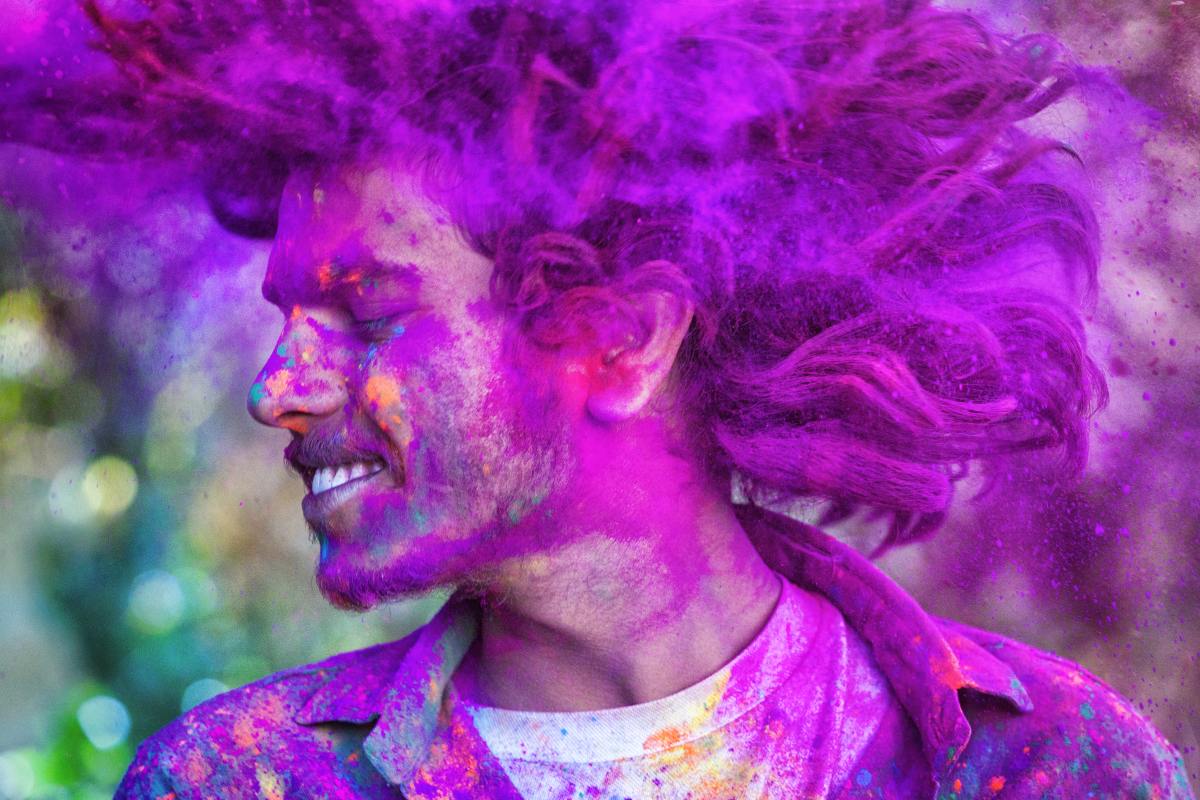According to one of the lesser-known mythological stories, Rishi Bhrigu had a beautiful wife Puloma, who was coveted by an Asura. A devotee of Agni, Bhrigu worshipped him every day, feeding him ghee. While Bhrigu took his morning bath, he would leave Puloma under Agni’s protection. One day, while Bhrigu was away, the Asura came and fed Agni so much ghee that he fell asleep. Taking advantage of the opportunity, the Asura abducted Puloma.
Bhrigu returned to find his beautiful wife gone. He got angry and cursed Agni saying no one will ever feed him again. Much to the consternation of the mortals and immortals, Agni began to die. Vishnu pleaded to Bhrigu to retract his curse. While that wasn’t possible, Bhrigu relented and acceded that Agni will only be given worthless offerings. Upon further pleading, he reduced his curse to one day — that is the day before Holi. So now, only worthless offerings are thrown into the fire on the night before Holi. And the next day, Agni again receives his due, thus saved by divine grace. This story is one of the many alternative narratives that exist regarding the celebration of Holi and the Holika fire. The widely known legend is, of course, that of Hiranyakashyapu, Prahlad and Holika.
The colourful festival of Holi is one of the most widely celebrated across the country and the world. Much like the various legends behind the festival, there are many ways that the occasion is celebrated across the country, each with its own peculiarity and flair. However, the play with colours and revelry seems to be a unifying factor, irrespective of whether we are talking about Hindoli, Holika, Madanotsava, Kamotsavara, Dhuleti, or Dhulandi. Anthropologists have often identified spring festivals as fertility rites and Holi is a prominent example. In Festivals, Fairs and Fasts in India, Shakti M. Gupta writes that Holi is believed to be the relic of a primitive fertility rite, and drinking bouts and sex orgies still take place among tribal communities. While the jury is out on the practice of orgies currently, there are ample examples of inhibitions being shed and a more free and flirtatious interaction between sexes.
An example of this would be Holi celebrations among the Lambadis, a nomadic tribe of Karnataka, Andhra Pradesh and Maharashtra.
Advertisement
Holi among the Lambadi tribe
Lambadis observe Holi by worshipping images of Kamadeva/Manmadha (God of love) and his wife Rati (Goddess of desire). A few days before the festival, women of the tribe go to neighbouring villages and dance in front of the houses of landlords, collecting money, grain, and gifts. ‘They beat time with a short stick (kolat) in their hands, and sing indecent songs but are fortunately unintelligible to most of the hearers,’ wrote British anthropologist L.K. Ananthakrishna Iyer. These gifts are used for the final festivities on Holi day to worship Kamadeva and Rati. According to one account, in the evening, a bonfire is lit, and men and women dance around it as separate groups. The women then bring pots of delicacies and there is a mock fight with the men trying to snatch the pots away. The women eventually catch the culprits and try to punish them—but all lightheartedly. The night ends with feasting and drinking. In another account, a pyre is built and the images of the two deities are placed on it and burnt; the ritual is called kamadahanam.
Bawdy songs and Holi-ness
While Iyer might count on the indecent songs of Lambadi women being unintelligible, the practice of singing such songs or even hurling obscenities is not exclusive to this banjara tribe. The Murias of central India celebrate Holi in a similar way as well, wherein a special dance is performed by the men. S.T. Das, in Lifestyle: Indian Tribes, observes: ‘a man is blackened with charcoal and dressed in a blanket and is called Budelya, another man dressed as a woman being called Raiyi. These two dances while one sings obscene songs, much liquor is drunk and practically all present gradually become inebriated.’
In Kashmir, too, there is reportedly a tradition of throwing mud at each other while using abusive language and playing jokes in order to frighten away pishachas (evil spirits), who are believed to enter the houses of the people on that day.
There is another practice in the region, as mentioned in the tenth-eleventh century traveller Al-Biruni’s travelogues, known as Hindoli-caitra ‘in which the Hindus meet in the devagriha of Vasudeva, and swing his image to and fro.’
Interestingly, this ritual of swinging an idol of Vasudeva is not restricted to the region.
Dola Purnima in Odisha
Though the festival of Holi is observed for a day or two across India, it is celebrated for five days in Odisha. Devotees take idols of Madanamohana (another name for Vasudeva) around in decorated palanquins called vimanas collecting alms. And on the final day, that is Holi, the celebration culminates in a swing festival for the deities. Many a time, several villages come together in big fairs—called Melana—where these idols are assembled and places for public viewing. A platform is created with swings, and the idols are swung, one after another amid enthusiastic cheers and merriment. Such melas or fairs continue till the month of Chaitra (March–April) in different places of the district of Cuttack, Puri, and Ganjam.
Another ritual involves the burning of a straw hut, much like the Yaoshang festival during this time in Manipur. What these various rituals around Holi show are that while there are differences in practice and legends across the length and breadth of the country, there are also similarities, even beyond the playing with colors and overall merriment which Holi is now most known for. There is unity, to repeat an oft-quoted phrase, in our diversity—if one just starts to look.
( This article is part of Saha Sutra, on www.sahapedia.org, the digital library of Indian culture)











